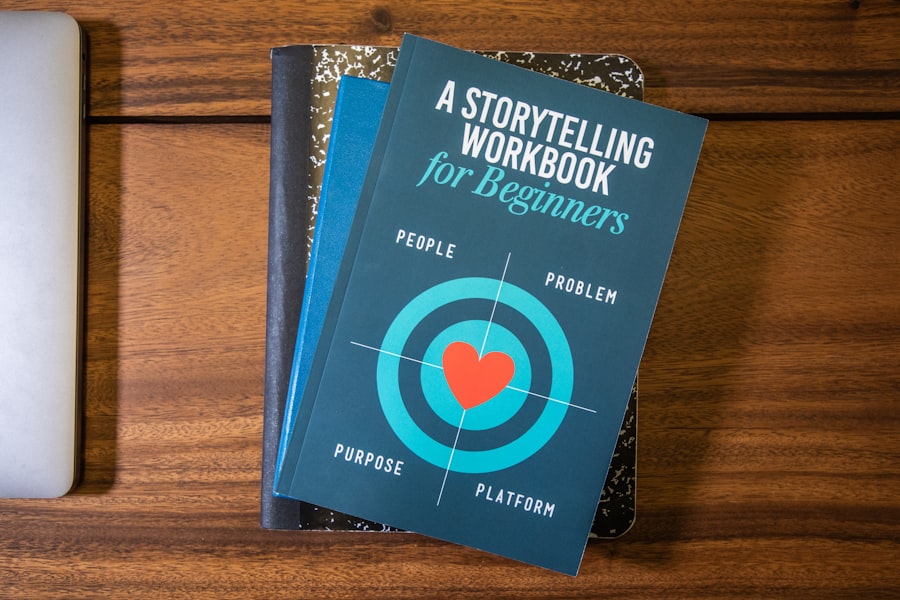
Engaging short stories serve as a powerful tool in the arsenal of English language educators, particularly for learners who are navigating the complexities of a new language. These narratives, often rich in cultural context and emotional depth, provide a unique opportunity for students to immerse themselves in the language while simultaneously exploring diverse themes and ideas. Short stories can captivate learners’ attention, making the process of language acquisition not only effective but also enjoyable.
The brevity of these narratives allows for focused learning sessions, where students can digest language concepts without feeling overwhelmed. Moreover, short stories often reflect the nuances of everyday life, offering learners relatable content that resonates with their experiences. This connection can foster a deeper understanding of the language, as students see how vocabulary and grammar are used in context.
The emotional engagement that comes from storytelling can also enhance memory retention, making it easier for learners to recall new words and phrases. As such, incorporating short stories into English language learning is not merely an educational strategy; it is a means of enriching the learner’s experience and broadening their cultural horizons.
Key Takeaways
- Short stories are a valuable tool for English language learners to improve their language skills and engage with the language in a meaningful way.
- Using short stories in English language learning can improve vocabulary, grammar, reading comprehension, and cultural understanding.
- Engaging short stories for English language learners should be relatable, culturally diverse, and have clear language and themes.
- When selecting short stories for English language learners, consider the learners’ interests, language proficiency, and cultural background.
- Strategies for engaging English language learners with short stories include pre-reading activities, interactive discussions, and creative projects to enhance comprehension and language skills.
Benefits of Using Short Stories for English Language Learning
The benefits of using short stories in English language learning are manifold. Firstly, they provide a rich source of vocabulary and idiomatic expressions that learners might not encounter in traditional textbooks. Through exposure to authentic language use, students can learn how words and phrases function in real-life contexts.
For instance, a story set in a bustling city might introduce terms related to urban life, while a tale about family traditions could highlight vocabulary associated with cultural practices. This contextual learning is crucial for developing fluency and comprehension. Additionally, short stories often incorporate dialogue, which is essential for understanding conversational English.
By listening to or reading dialogues within stories, learners can grasp the rhythm and intonation of spoken language.
Furthermore, the narrative structure of short stories—complete with conflict, resolution, and character development—engages learners on an emotional level, making the language more memorable.
The combination of narrative engagement and linguistic exposure creates a potent learning environment that can significantly enhance language acquisition.
Characteristics of Engaging Short Stories for English Language Learners

When selecting short stories for English language learners, certain characteristics make them particularly engaging and effective. One key feature is simplicity in language use. Stories that employ straightforward vocabulary and sentence structures are more accessible to learners at various proficiency levels.
For example, a story that uses common verbs and avoids complex grammatical constructions allows beginners to grasp the content without feeling lost. This accessibility encourages learners to tackle reading with confidence. Another important characteristic is cultural relevance.
Stories that reflect the backgrounds and experiences of the learners can foster a sense of connection and belonging. For instance, a story featuring characters from similar cultural backgrounds or addressing themes relevant to the learners’ lives can spark interest and motivation. Additionally, engaging short stories often include vivid imagery and relatable characters, which help to create mental pictures that aid comprehension.
The emotional resonance of well-crafted narratives can also inspire discussions and reflections among learners, further enhancing their engagement with the material.
Tips for Selecting Short Stories for English Language Learners
| Criteria | Considerations |
|---|---|
| Language Level | Choose stories with vocabulary and grammar appropriate for the learners’ level. |
| Length | Opt for short stories to maintain learners’ attention and comprehension. |
| Engagement | Select stories with interesting plots and relatable characters to keep learners engaged. |
| Cultural Relevance | Consider stories that are culturally relevant and diverse to broaden learners’ perspectives. |
| Discussion Potential | Look for stories that prompt meaningful discussions and critical thinking. |
Selecting appropriate short stories for English language learners requires careful consideration of several factors. First and foremost, it is essential to assess the proficiency level of the learners. Stories should match their linguistic capabilities; for instance, beginners may benefit from tales that use basic vocabulary and simple sentence structures, while more advanced learners can handle narratives with richer language and complex themes.
Educators should also consider the interests of their students—stories that align with their hobbies or aspirations are likely to capture their attention more effectively. Another tip is to look for stories that incorporate universal themes such as friendship, family, or adventure. These themes resonate across cultures and can facilitate discussions that allow learners to share their own experiences and perspectives.
Additionally, educators should seek out stories that include illustrations or visual aids, as these can provide context clues that enhance understanding. Finally, it is beneficial to choose stories that offer opportunities for follow-up activities or discussions, allowing learners to engage with the material beyond mere reading.
Strategies for Engaging English Language Learners with Short Stories
To maximize engagement with short stories among English language learners, educators can employ various strategies that promote interaction and critical thinking. One effective approach is to use pre-reading activities that activate prior knowledge and set the stage for comprehension. For example, before diving into a story about a cultural festival, teachers might ask students about their own experiences with celebrations or traditions.
This not only piques interest but also encourages learners to make personal connections with the text. During reading sessions, educators can implement guided reading techniques where they pause at key moments to ask questions or prompt discussions about characters’ motivations or plot developments. This interactive approach fosters a deeper understanding of the narrative while encouraging learners to express their thoughts in English.
Post-reading activities are equally important; they can include creative tasks such as rewriting the ending of the story or role-playing scenes with classmates. These activities not only reinforce language skills but also allow students to explore their creativity within the framework of the language they are learning.
Incorporating Short Stories into English Language Learning Curriculum

Integrating short stories into an English language learning curriculum requires thoughtful planning and alignment with educational goals. One effective method is to create thematic units where multiple stories revolve around a central topic or theme. For instance, a unit on “identity” could include stories that explore cultural heritage, personal growth, and self-discovery.
This thematic approach allows learners to delve deeper into specific concepts while reinforcing vocabulary and grammar related to those themes. Additionally, short stories can be used as springboards for interdisciplinary learning. For example, a story about environmental conservation could lead to discussions about science topics such as ecosystems or climate change.
By connecting literature with other subjects, educators can create a more holistic learning experience that engages students on multiple levels. Furthermore, incorporating technology—such as digital storytelling platforms or online discussion forums—can enhance the curriculum by providing diverse avenues for interaction and collaboration among learners.
Activities and Exercises to Enhance English Language Learning through Short Stories
To further enrich the learning experience through short stories, educators can design a variety of activities and exercises tailored to different aspects of language acquisition. One popular activity is story mapping, where students create visual representations of the plot structure, including elements such as characters, setting, conflict, and resolution. This exercise not only reinforces comprehension but also helps learners organize their thoughts in a coherent manner.
Another engaging activity is character analysis, where students delve into the motivations and traits of key characters within a story. They can create character profiles that include descriptions, quotes from the text, and personal reflections on how they relate to those characters. This exercise encourages critical thinking and allows learners to practice writing skills in a structured format.
Additionally, educators might consider incorporating group discussions or debates based on themes presented in the stories; this fosters collaborative learning while enhancing speaking and listening skills.
Resources for Finding Engaging Short Stories for English Language Learners
A wealth of resources exists for educators seeking engaging short stories suitable for English language learners. Online platforms such as Storybird or Wattpad offer a plethora of user-generated content that spans various genres and themes. These platforms allow teachers to curate collections tailored to their students’ interests while providing opportunities for creative writing assignments.
Moreover, many educational publishers produce anthologies specifically designed for language learners, featuring simplified texts alongside glossaries and comprehension questions. Websites like ReadWorks or CommonLit provide free access to a wide range of short stories accompanied by teaching resources that facilitate lesson planning. Additionally, local libraries often have sections dedicated to children’s literature or young adult fiction that can be invaluable sources of engaging narratives suitable for diverse age groups and proficiency levels.
In conclusion, engaging short stories are an invaluable resource in the realm of English language learning. They not only enhance linguistic skills but also foster cultural understanding and emotional connections among learners. By carefully selecting appropriate narratives and implementing effective teaching strategies, educators can create dynamic learning environments that inspire students on their journey toward fluency in English.
If you are interested in using short stories to improve your English skills, you may also want to check out the collection of ebooks available at Sersea Ink. These ebooks cover a variety of topics and genres, providing you with even more opportunities to practice your language skills while enjoying engaging content. Whether you are looking to expand your vocabulary, improve your reading comprehension, or simply enjoy a good story, these ebooks are a great resource for English learners.
FAQs
What are short stories for learning English?
Short stories for learning English are brief, fictional narratives that are specifically designed to help English language learners improve their language skills. These stories are often written with simplified language and grammar to make them more accessible to learners.
How can short stories help in learning English?
Short stories can help in learning English by providing learners with engaging and relatable content that allows them to practice reading, listening, and comprehension skills. They also expose learners to new vocabulary, sentence structures, and cultural contexts.
What are the benefits of using short stories for learning English?
The benefits of using short stories for learning English include improved vocabulary acquisition, enhanced comprehension skills, increased cultural awareness, and the opportunity to practice grammar and sentence structure in context. Additionally, short stories can make language learning more enjoyable and motivating for learners.
Where can one find short stories for learning English?
Short stories for learning English can be found in various resources such as language learning websites, textbooks, online platforms, and mobile applications. Many language learning materials and courses also include short stories as part of their curriculum.
How can one effectively use short stories for learning English?
To effectively use short stories for learning English, learners can read and listen to the stories multiple times, take notes on new vocabulary and grammar structures, discuss the stories with others, and complete comprehension activities or exercises related to the stories. It’s also helpful to choose stories that are at an appropriate level of difficulty for the learner.



